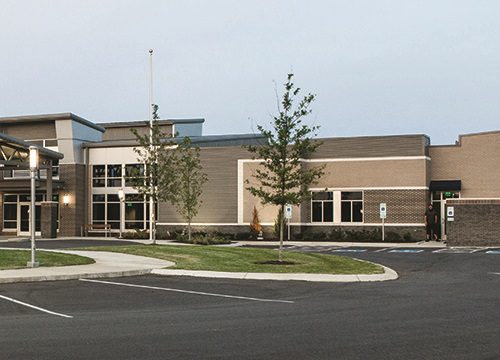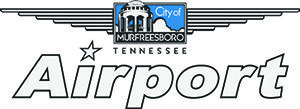Murfreesboro Municipal Airport (MBT) recently opened a new $4.5 million terminal to welcome visitors to one of the Top 10 fastest-growing communities in the U.S. With immense employment opportunities and a highly touted quality of life, this popular Tennessee city is attracting people of all ages and a variety of aircraft activity
Murfreesboro Municipal Airport (MBT) recently opened a new $4.5 million terminal to welcome visitors to one of the Top 10 fastest-growing communities in the U.S. With immense employment opportunities and a highly touted quality of life, this popular Tennessee city is attracting people of all ages and a variety of aircraft activity.
 When Airport Manager Chad Gehrke moved to Murfreesboro in 1990, it had approximately 40,000 residents. Today, it’s toppling the expansion charts with a population of 140,000.
When Airport Manager Chad Gehrke moved to Murfreesboro in 1990, it had approximately 40,000 residents. Today, it’s toppling the expansion charts with a population of 140,000.
“All of the surrounding airports have seen a lot of growth due to the population boom,” Gehrke reports.
In addition to its new terminal, MBT has 101 T-hangars and serves as home base for a variety of locally owned aircraft, a Vanderbilt University Life Flight helicopter and a handful of corporate jets. The airport is also home to Middle Tennessee State University’s Aerospace Program, with a record enrollment of more than 1,000 students in 2019.
Gehrke explains that a new terminal was a must to serve Murfreesboro’s thriving community and student population. The original building was built in 1952, expanded in 1984 and looked like an out-of-date ranch home. “We got our money’s worth out of that building,” he jokes. “But it did not represent the forwardness, excitement and dynamic culture of our community anymore.”
|
Project: New Terminal Location: Murfreesboro (TN) Regional Airport Major Tenant: Middle Tennessee State University Aerospace Program Cost: $4.5 million Size: 16,000 sq. ft. Highlights: Open-concept design, business center, tenant space for local aviation school Architect: Lowen + Associates LLC Contractor: Smith Design/Build Grading Subcontractor: Baker Construction
Timeline: Design-build team selected in spring 2018; airport staff moved into temporary trailers in April 2019; university classroom opened Aug. 24, 2020; airport staff moved into new building in Furnishings: National Office Interiors Audio/Visual Systems: AVI |
Bright, Shiny & New
Today, the new terminal is the star of the airport. It includes modern amenities such as charging stations, new seating, an open-concept layout and great views from the main floor and mezzanine observation deck.
The business center on the north features a meeting room with seating for 70 to 100 people and modern audio/visual systems such as large screen TVs and pull-down screens with projectors. Gehrke is hoping that the Murfreesboro City Council and other local organizations take advantage of the facilities in the new business center. They could even use the wall-mounted cameras to live stream meetings, he notes.
An executive boardroom and a catering kitchen add extra functionality to the business center. The airport decided against installing a full-size kitchen because that would have involved meeting more stringent building codes. A simple space to heat and refrigerate food will serve the general aviation airport’s needs just fine, says Gehrke.
Pilot facilities include individual offices, a private lounge and a separate briefing area.
Staff offices on the south end of the terminal have direct access to the apron and clear views of the airfield. “Like many municipal airports, our staff fuels aircraft, takes care of the hangars and ramp, mows the lawns—all those things,” he relates.
Wide and tall glass-paneled areas stretch from the lower level to the mezzanine, providing a nearly 180-degree view of the airfield. The new conference areas, business center and staff offices, as well as main areas, all enjoy the bustling airside view.
Even the roof was designed for visual appeal. Prime contractor Blake Smith of Smith Design/Build, says that unlike most buildings, airports must look good from five sides, including the top. So his firm made MBT’s roof uncluttered, with interesting architecture, but also energy efficient, with many different angles to minimize chances of leaking.
Jim Lowen, architect and project designer, shares a memorable moment during construction: “When the metal frame was up, we went to the mezzanine level and took in the view looking down at the airfield, out into the airstrip and at the main gathering space on the other side. That was extremely exciting because this terminal had taken on an entirely different presence than what the airport was used to.”
At that point, Gehrke and city officials were able to see the plans that had been conceptualized on paper brought to life. “It was a powerful moment,” Lowen recalls.

Design-Build for the Win
The project began on a traditional design-then-build construction path, but when the initial bids came in from builders, the design had the project on a trajectory to be well over budget by a couple million dollars. That prompted Assistant City Manager Gary Whitaker to suggest using a design-build approach. Whitaker became an integral part of the team going forward, and MBT’s terminal became the first facility Murfreesboro built using this method.
The initial field of 10 firms that bid on the project was narrowed to two candidates to present ideas, and the team of Lowen+Associates LLC/Smith Design Build won the contract. Gehrke notes that the new design for a 16,000-square-foot terminal checked every box the airport had wanted, and more.
To stay within the $4.5 million budget, the design/build team worked with suppliers and engineers to optimize the design for cost effectiveness. “We measure all those parameters and balance it out to get extremely good quality and value,” Smith explains.
He says he enjoys using the design-build method because the architectural team and building contractor work as one. “Then the owner comes on as an ally, an asset of the team,” Smith adds.
The MBT terminal was not the first time Smith and Lowen have teamed up. The pair has developed an efficient working relationship and deep mutual respect for one another over the course of several previous projects. “He’s very creative, and he listens to other people,” Smith says of Lowen.
“He’s a great contractor to collaborate with,” says Lowen of Smith.
After 30 years completing design-build projects, Smith says he doesn’t know of a good reason to complete a new facility any other way. But he also warns airport execs that the process can go south quickly if the wrong team is hired.
“We work very cohesively,” agrees Lowen. “If architects and contractors work harmoniously together, it very much benefits the client and the budget. This was a great experience, and it came together very, very well.”

Tackling Challenges
Even with the right team in place, few airport projects are considered easy or simple. Lowen notes that the main design challenge at MBT was making sure all the necessary elements fit in the building while also creating a structurally interesting look. “The main road is only a quarter of a mile from the airport, so when you drive by, you see the terminal,” he explains. “It really has a presence more than it used to. We tried to push ourselves to create something that gave them a great aesthetic that will look like a new building with modern elements for years to come.”
On the construction side, the largest obstacles were maneuvering around inadequately documented utilities and keeping the airport operational during construction. It helped that the owner of Baker Construction was familiar with the site because he is a local pilot who flies out of MBT. “He had a lot of motivation to get this up,” Smith jokes.
All of the team principals agree that using pre-engineered structures helped the budget tremendously. Lowen explains that the new terminal is actually 10 individual structures with 10 different roof planes that he and his designers tied together.
“I use Jim’s name as a verb: Lowenization,” says Smith. “It’s been all tricked out and is so cool looking! I really loved when that structure went together; it was complicated.”
“This was a financially sound, energy-efficient way to go,” adds Lowen. Specifically, he gives the pre-engineered structures high marks for “phenomenal insulation and long-lasting seamed metal roofs with 40-year warranties.”
Gehrke considers the pre-engineered structures a good choice that gave MBT the terminal it hoped for—an especially happy ending after the first design didn’t pan out.

Ample Space for Air School
With approximately 100,000 operations per year, MBT is busy for a regional airport, and much of its traffic comes from one major tenant: the Aerospace Department of Middle Tennessee State University (MTSU). The school flies 35 aircraft out of MBT, including DA40s, Piper Seminoles, a Super Cub and a King Air 350.
“MTSU is renowned for their pro pilot program and have training in other aviation areas as well, including maintenance, technology, dispatch and air traffic control, unmanned aerial systems and aviation administration”, Gehrke says.
The university also partners with the Delta Air Lines Propel program, which helps put students through the training program and into the carrier’s ranks, he explains. “Prior to March, there was a pilot shortage, and then COVID hits and now they’re furloughing,” he laments, hoping there will be more opportunities for graduates in the near future.
The university uses its 2,100 square feet of leased space inside the new terminal to serve hundreds of students and 80 flight instructors. Previously, MTSU had simulation labs, maintenance shops, hangars and other facilities at the airport, but lacked classroom space. Since late August, students have been streaming in and out of the new classroom from 7 a.m. to 9 p.m. “It’s really become a popular place,” Gehrke reports.
Adding the MTSU classroom to the terminal helps blend various generations of aviation enthusiasts—something Gehrke sees as a valuable advantage. Students can mix with professional pilots from Murfreesboro and elsewhere, many of whom graduated from the very same program.
Overall, Gehrke says he is thrilled with MBT’s new terminal, and so are the 172 people who work there and many more residents of the greater Murfreesboro community. “It is a beautiful scene—very representative of our community, inside and out,” he remarks. “What was kind of an old, run-down looking terminal area has all of a sudden become modern, inviting and almost unrecognizable—in a great way!”


 facts&figures
facts&figures

